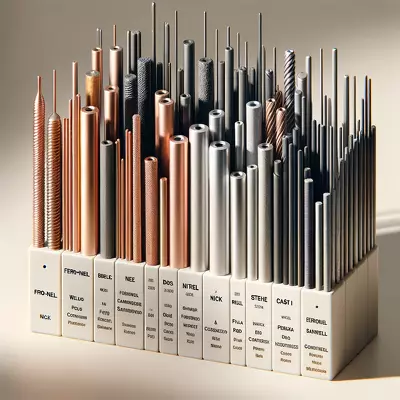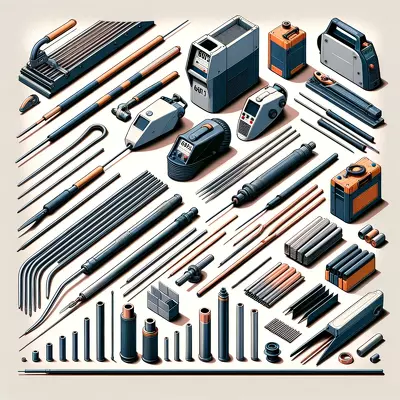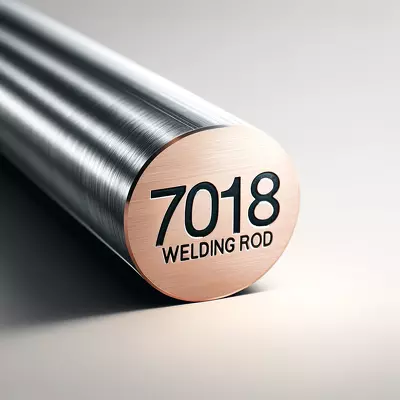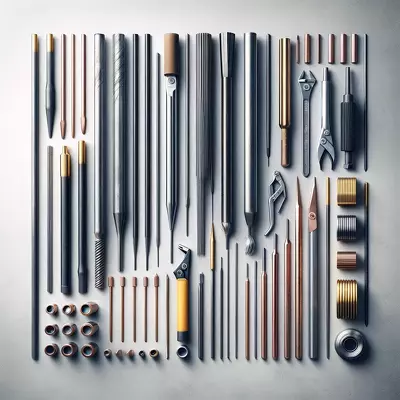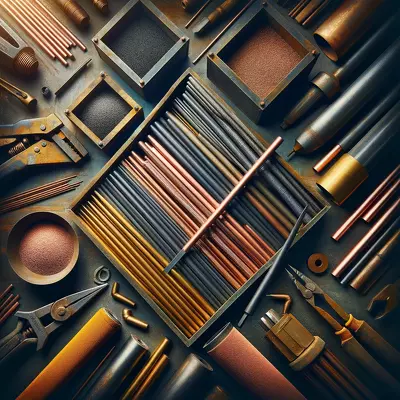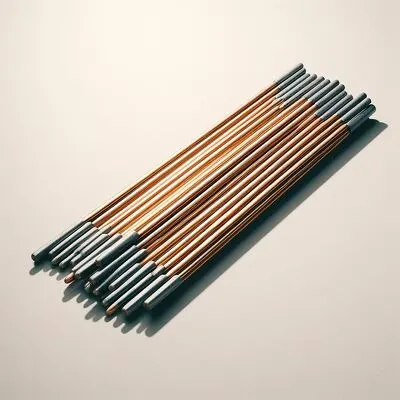Deciphering Differences in 308 vs 309 Welding Rods
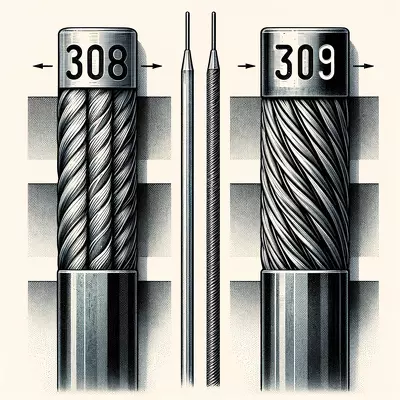
When you’re joining metals together, choosing the right tool can make all the difference. In the world of welding, rods like the 308 and 309 are go-to choices for their unique qualities. Whether you’re a professional welder or a weekend DIY enthusiast, understanding the difference between these two can help ensure your next project is strong and durable. Let’s explore what sets the 308 vs 309 welding rod apart and which might be the best pick for your welding needs.
I. Introduction to Welding Rods 308 and 309
A. Overview of Popular Welding Rods
Welding rods are essential tools in the fabrication industry, and they are crucial for securely joining metals. The 308 and 309 welding electrodes are among the most commonly used, each serving specific purposes based on their material composition and resultant properties. This section introduces these rods and sets the stage for a detailed discussion of their applications and benefits.
II. Key Characteristics of the 308 Welding Rod
A. Composition and Properties
The 308 welding rod is primarily designed for welding 304 stainless steel. It contains high levels of chromium and nickel, which help form a stable austenite structure, providing corrosion resistance and durability against heat.
B. Ideal Uses and Applications
This electrode excels in environments where corrosion resistance is crucial, such as in food processing equipment or chemical containers. Its consistent performance makes it a preferred choice for fabricating stainless steel kitchenware and medical devices.
C. Advantages and Limitations
While the 308 rod offers excellent corrosion resistance and heat tolerance, it is less effective on thicker or mixed metals, which can limit its use in diverse projects.
III. Understanding the 309 Welding Rod
A. Composition and Properties
The 309 welding rod is a more versatile electrode capable of welding dissimilar metals, including stainless and mild steel. It has a higher content of chromium and nickel than the 308, which enhances its strength and heat resistance.
B. Common Uses and Suitability
It is particularly valued in settings where metals of different compositions are joined, such as in metal furniture or mixed-metal fabrications. The 309 is also adept at handling high-temperature applications, making it suitable for furnace parts and heating equipment.
C. Pros and Cons
The primary advantage of the 309 rods is its versatility and strength in joining different metals. However, its higher cost can be a drawback for budget-conscious projects.
IV. Comparative Analysis of Welding Rods 308 vs 309
A. Performance in Various Environments
While both rods perform admirably under typical conditions, the 309 rod offers better performance in more challenging environments, such as when welding dissimilar or thicker metals.
B. Cost-Effectiveness
The 308 rod is generally more cost-effective for projects involving thin or similar types of stainless steel. At the same time, the 309, though more expensive, provides value through its adaptability in diverse welding scenarios.
C. Availability and Accessibility
Both rods are widely available in most hardware and specialty welding shops. However, availability can vary based on geographical location and specific industrial demands.
V. Choosing Between 308 and 309 Welding Rods
A. Factors to Consider
Selecting the right welding rod involves considering material type, project requirements, environmental conditions, and budget. Each factor plays a crucial role in determining the most appropriate rod for a specific application.
B. Recommendations for Different Welding Needs
For projects requiring high corrosion resistance and where similar metals are used, the 308 is ideal. For more complex projects involving different or thicker metals, the 309 is recommended for its strength and versatility.
VI. FAQs
Q: What is the main difference between 308 and 309 welding rods?
A: The main difference lies in their material composition; 309 has higher chromium and nickel content, making it suitable for welding dissimilar metals.
Q: Can 308 welding rods be used for outdoor projects?
A: Yes, 308 rods can be used outdoors, especially in environments where corrosion resistance is vital.
Q: Are 309 welding rods good for all types of stainless steel?
A: While 309 rods are versatile, they are best used when welding stainless steel to other types of metals rather than for all stainless steel grades.
Q: What are the cost implications of choosing 309 over 308?
A: Choosing 309 usually involves a higher upfront cost due to its enhanced capabilities, but it can be more cost-effective in complex projects.
Q: How do I decide which rod to use for a mixed-metal project?
A: The 309 rod is generally recommended for mixed-metal projects because it effectively joins different types of metals without compromising strength or durability.
Q: What should I consider when welding in high-temperature conditions?
A: In high-temperature conditions, consider using a 309 rod, as it is specifically formulated to withstand higher temperatures and maintain strong welds.
Q: Can I use 308 rods for automotive repair welding?
A: Yes, 308 rods can be used for automotive repairs, especially if the parts being welded are primarily stainless steel, offering a balance between strength and corrosion resistance.
Q: What do the numbers on welding rods signify?
A: The numbers on a welding rod indicate key characteristics and recommended uses of the rod. These include the rod’s tensile strength, the positions in which it can be used, the type of coating it has, and the type of electrical current it is compatible with.
VII. Conclusion: Selecting the Right Welding Rod for Your Needs
Choosing the correct welding rod, whether it’s a 308 or 309, significantly influences the quality and durability of your welding projects. By understanding the specific properties and suitable applications of each, welders can make informed decisions that optimize their work and ensure long-lasting results. The selection process involves considering the material compatibility, project requirements, and the working environment, all aimed at achieving the best outcome for your specific welding needs.
VIII. Suggested Readings
Before embarking on any welding project, gaining a deeper understanding of materials and techniques can significantly boost your confidence and efficiency. The following books are recommended for those looking to expand their welding knowledge:
- “Welding Principles and Applications” – This book provides a comprehensive overview of various welding techniques, including detailed discussions on different types of welding rods and their applications.
- “Modern Welding Technology” – Insight into the latest technological advancements and methodologies in welding, focusing on practical applications and industry standards.
- “The Welder’s Handbook” is a guide for both novice and experienced welders. It covers everything from basic techniques to more advanced practices, including the use of 308 and 309 welding rods.
- “Metallurgy and Weldability of Stainless Steels” – Delves into the properties of stainless steels and their behavior under different welding conditions, ideal for those using 308 and 309 rods.
After exploring these resources, welders of all levels will be better equipped to handle various challenges they might face in the field, making more educated choices about materials and methods for their specific projects. Whether you’re just starting or looking to refine your skills, these readings can provide valuable insights into the art and science of welding.

